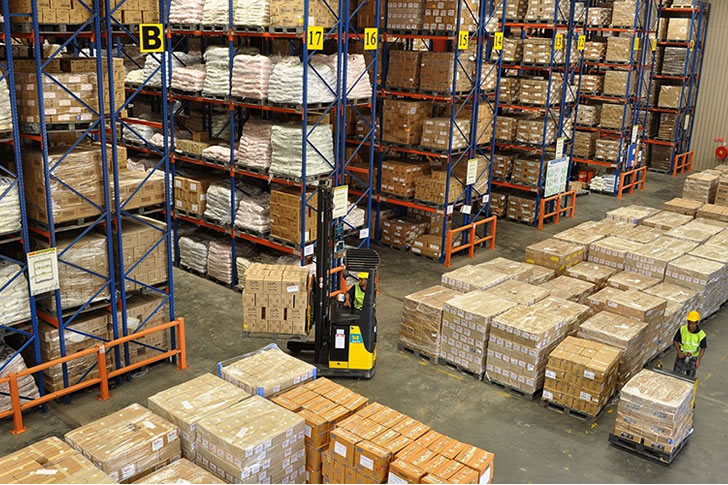How to Find Cheap Warehousing: Tips and Strategies
Finding cheap warehousing is a critical step for businesses looking to manage inventory efficiently while keeping costs low. In this guide, we will explore practical strategies to find cost-effective warehousing solutions.

Understanding Warehousing Costs
The cost of warehousing can vary widely based on several factors, including location, size, and additional services provided. On average, warehouse rental prices in the United States range from $5 to $20 per square foot per year, depending on these factors.
Key Factors Influencing Warehousing Costs
1. Location: Warehousing costs are significantly influenced by location. Urban areas and regions with high demand tend to have higher rental rates. For instance, warehouse space in Los Angeles may cost around $12 per square foot annually, whereas in smaller cities, it could be as low as $5 per square foot.
2. Size and Layout: The size and layout of the warehouse space also play a crucial role in determining costs. Larger spaces typically have a lower cost per square foot. Additionally, the layout, such as high ceilings and easy access for loading and unloading, can impact pricing.
3. Duration of Lease: Longer lease terms often come with discounts. Landlords prefer stable, long-term tenants and may offer reduced rates for extended commitments. For example, a five-year lease might include a 10% discount compared to a one-year lease.
4. Additional Services: Warehouses offering additional services such as security, climate control, and logistics support will generally charge higher rates. Evaluating the necessity of these services against their costs is essential for finding the most affordable solution.
Strategies to Find Cheap Warehousing
1. Research and Compare Prices: Start by researching different warehousing options in your desired location. Online platforms like LoopNet, Warehousing1, and Commercial Exchange offer comprehensive listings with pricing details. Comparing these listings can help you identify cost-effective options.
2. Utilize Brokerage Services: Commercial real estate brokers have extensive knowledge of the market and can help you find warehousing options that meet your budget. They often have access to off-market deals and can negotiate better terms on your behalf.
3. Consider Shared Warehousing: Shared or co-warehousing is an increasingly popular option for businesses looking to reduce costs. By sharing space with other companies, you can benefit from lower rates while still having access to essential services. For example, Saltbox offers flexible co-warehousing solutions starting at $500 per month for small spaces.
4. Look for Incentives and Grants: Some regions offer incentives and grants to businesses that set up operations in specific areas. Check with local economic development agencies to see if you qualify for any financial assistance.
Negotiating the Good Price
1. Understand the Market: Before entering negotiations, ensure you have a good understanding of the current market conditions. Knowing average rental rates in your desired area can give you leverage when negotiating.
2. Highlight Long-Term Value: Emphasize your commitment to a long-term lease. Landlords value stability and may offer better rates for tenants willing to sign longer contracts.
3. Be Flexible: Flexibility with your move-in date, lease terms, and space requirements can open up more opportunities for negotiation. Landlords may offer discounts for tenants who can accommodate their scheduling needs.
4. Request Customizable Terms: Don’t hesitate to ask for terms that suit your specific needs. This could include options for expansion, rent-free periods, or reduced rates for initial months.
Examples of Cheap Warehousing
1. Midwest Region: In cities like Indianapolis and Columbus, warehouse rental rates are among the lowest in the country. Prices can range from $3 to $6 per square foot per year, making these cities attractive for businesses looking for affordable space.
2. Southern States: Cities like Memphis and Atlanta offer competitive warehousing rates, typically between $4 and $8 per square foot per year. The proximity to major transportation hubs also adds to the appeal of these locations.
3. Small Cities and Suburbs: Consider looking beyond major metropolitan areas. Suburbs and smaller cities often have lower rental rates. For example, warehouse space in the outskirts of Dallas may cost around $5 per square foot annually, compared to $10 or more in the city center.
Tips for Reducing Warehousing Costs
1. Optimize Space Utilization: Efficiently utilizing your warehouse space can reduce the need for additional storage. Implementing vertical storage solutions and organizing inventory systematically can help maximize available space.
2. Use Technology: Invest in warehouse management systems (WMS) to streamline operations and improve efficiency. Technology can help reduce labor costs and minimize errors, ultimately saving money.
3. Regularly Review Contracts: Periodically review your warehousing contracts to ensure you’re getting the best rates. Market conditions change, and you might be able to renegotiate terms to your advantage.
4. Consolidate Shipments: If possible, consolidate shipments to reduce the number of trips needed for delivery and pick-up. This can lower transportation costs and minimize the need for excess storage space.
Conclusion
Finding affordable warehousing requires thorough research, strategic planning, and effective negotiation. By understanding the key factors influencing costs and exploring various options, businesses can secure cost-effective storage solutions that meet their needs. Whether you’re a small business or a large corporation, the strategies outlined in this guide can help you find and negotiate the best warehousing deals.







Recent Comments